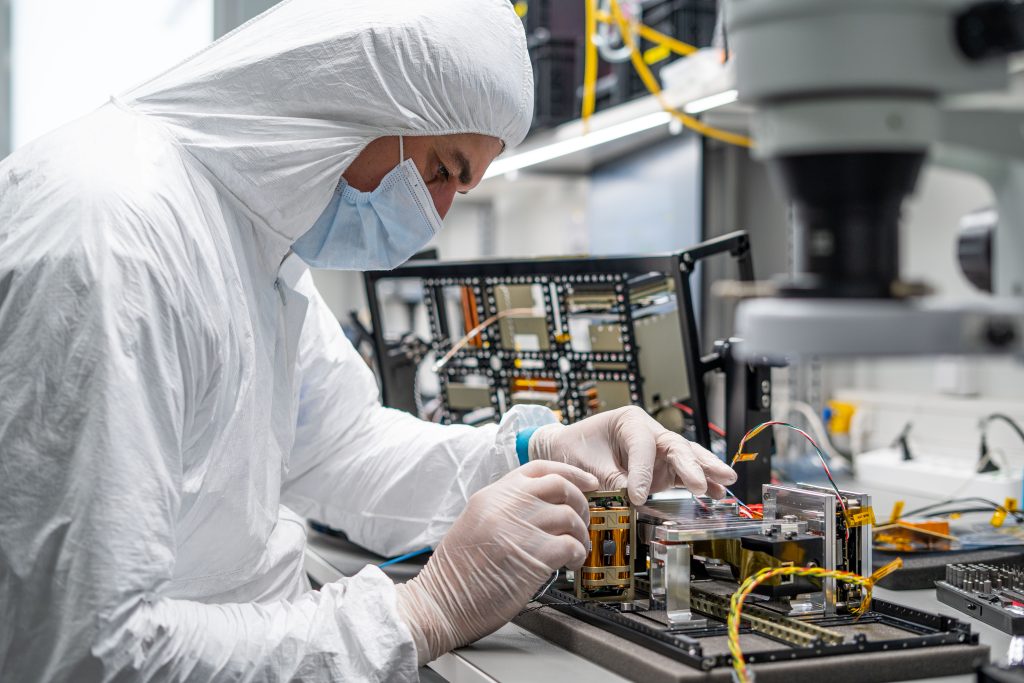Be part of the future with us!
Register now for our online product launch event on May 23rd.
Missions in space, particularly those involving CubeSats and small satellites, require highly reliable, redundant, and fail-safe functionality. Our Software Engineers ensure that all systems aboard a CubeSat or small satellite can execute their functions effectively, from payload data management and satellite attitude control to communication with ground stations to downlink telemetry and payload data.
We can classify CubeSat and small satellite software engineering design into platform-specific and mission-specific. Platform-specific software manages the satellite’s core systems, such as power management, sensors, actuators, thermal control, and telemetry. In contrast, mission-specific software in CubeSats and small satellites interacts more with the payload and data processing units.

Field-Programmable Gate Arrays (FPGAs) offer versatility and stability, making them ideal for space applications in CubeSats and small satellites where data management adaptability and speed is essential. FPGA design for these applications requires a deep understanding of hardware, programming, and optimization to ensure the FPGA’s performance meets the demanding requirements of our customers in the CubeSat and small satellite sector.
Drivers and firmware form the backbone of our CubeSat and small satellite hardware, enabling communication between different components and systems. To ensure seamless integration and efficient data transfer, our Embedded Software Engineers write code that interfaces with various sensors, actuators, and communication modules in CubeSats and small satellites.
Linux-based operating systems are commonly used in CubeSats and small satellites on top of bare-metal systems due to their versatility. Linux apps and tools streamline CubeSat and small satellite software development and enhance operational efficiency when monitoring and managing satellite subsystems, performing data analysis, and task automation.
As part of Kongsberg Defense and Aerospace since 2022, we are further strengthening our commitment to robust, innovative, secure, and reliable space solutions by prioritizing the security and privacy of CubeSat and small satellite data. To achieve this, we employ AES-256 encryption, authentication, command logging, anomaly detection, security access levels, and key rotation practices across our space and ground operations.
Rigorous software testing ensures the functionality, reliability, and security of the CubeSat’s and small satellite’s software systems. Test automation further accelerates the testing process by automating repetitive tasks and executing test scenarios efficiently. By combining manual and automated testing procedures, we can make sure that every aspect of the CubeSat’s and small satellite’s software is examined thoroughly, reducing the risk of operational failures in space.
Hardware-in-the-loop (HIL) testing allows our engineers to test and validate hardware components and subsystems in simulated environments for CubeSats and small satellites. By connecting real hardware to a simulator, they can replicate the conditions and interactions it would experience in space. Through HIL testing, engineers can identify and resolve any hardware issues or anomalies before the CubeSat or small satellite is deployed to evaluate its performance and functionality.